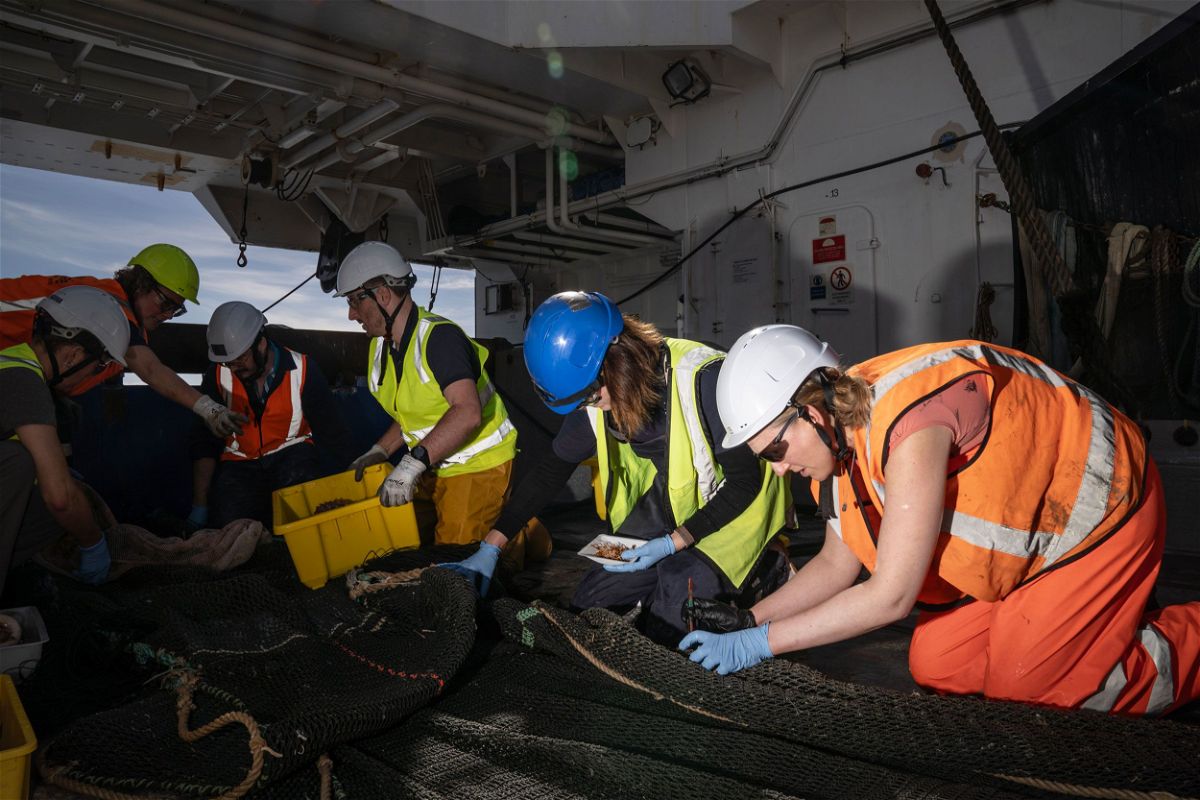Scientists discover 100 potential new deep-sea species, including mystery creature

Two eelpouts that could be new to science were captured in a fish trap set 1.7 miles (2
By Katie Hunt, CNN
(CNN) — Marine researchers on a mission to record life hidden in the world’s oceans have reported they found about 100 potential new species — including one mystery starlike creature.
The expedition team focused its investigation on the 500-mile (800-kilometer) long Bounty Trough, a little-explored part of the ocean off the coast of New Zealand, east of South Island. The scientists’ three-week voyage aboard the research vessel Tangaroa, which belongs to the country’s National Institute of Water and Atmospheric Research, occurred in February.
The team collected almost 1,800 samples from depths as far down as 3 miles (4,800 meters), finding species of fish, squid, mollusk and coral that they believe are new to science.
“You’ve got this big area off the east coast of New Zealand where there’s just an absolutely paucity of data points. We don’t know anything about it,” said Dr. Daniel Moore, expedition science manager of Ocean Census, a new alliance launched in April 2023 that aims to identify 100,000 unknown species in the next 10 years. “It was true exploration, very exciting.”
For the next three weeks, a team of scientists will sort and describe the deep-sea finds to confirm whether they are newfound species.
The team’s scientists have been puzzled by one find, which they initially thought was a type of sea star or sea anemone.
“It is still a mystery. We can’t even describe it to family. We don’t know where it is in the tree (of life) as of yet, so that’ll be interesting,” Moore said.
Dr. Michela Mitchell, a taxonomist at the Queensland Museum Network, said in a statement released by Ocean Census it could be a type of deep-sea coral called octocoral.
“Even more excitingly, it could be a whole new group outside of the octocoral. If it is, that is a significant find for the deep sea and gives us a much clearer picture of the planet’s unique biodiversity,” she said in the statement.
Moore said he was surprised that the team found a new species of fish known as an eelpout that was “instantly recognized as being different to the others.”
“Finding new vertebrates is rare. There’s hundreds of thousands of invertebrates in the sea that we still don’t know. Vertebrates, we like to think that we know what’s out there, but the reality is, we just don’t,” he said.
To collect the samples, the vessel towed three different types of sleds depending on the terrain. These included a traditional beam trawl that towed a net to collect samples, a heavy-duty seamount sled for rocky surfaces and another device that sampled the water just above the seafloor, as well as a towed underwater camera.
Huge gaps remain in scientific knowledge of the ocean depths. Of the 2.2 million species believed to exist in Earth’s oceans, only 240,000 have been described by scientists, according to Ocean Census.
The-CNN-Wire
™ & © 2024 Cable News Network, Inc., a Warner Bros. Discovery Company. All rights reserved.